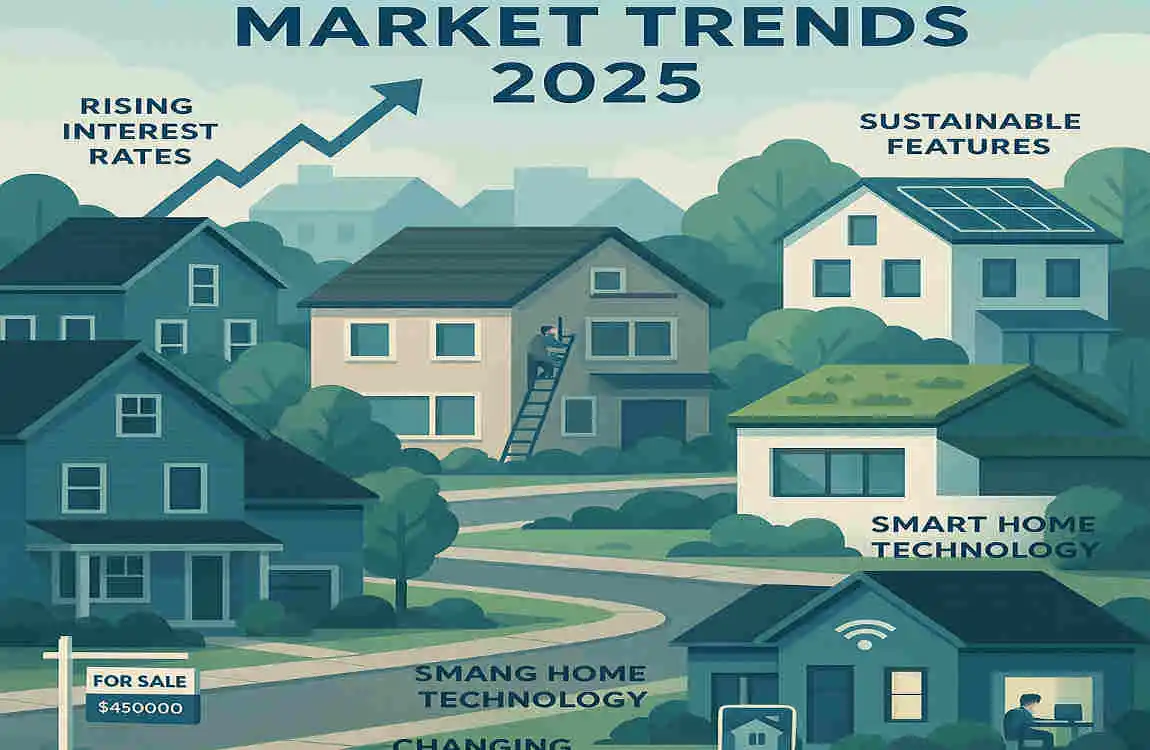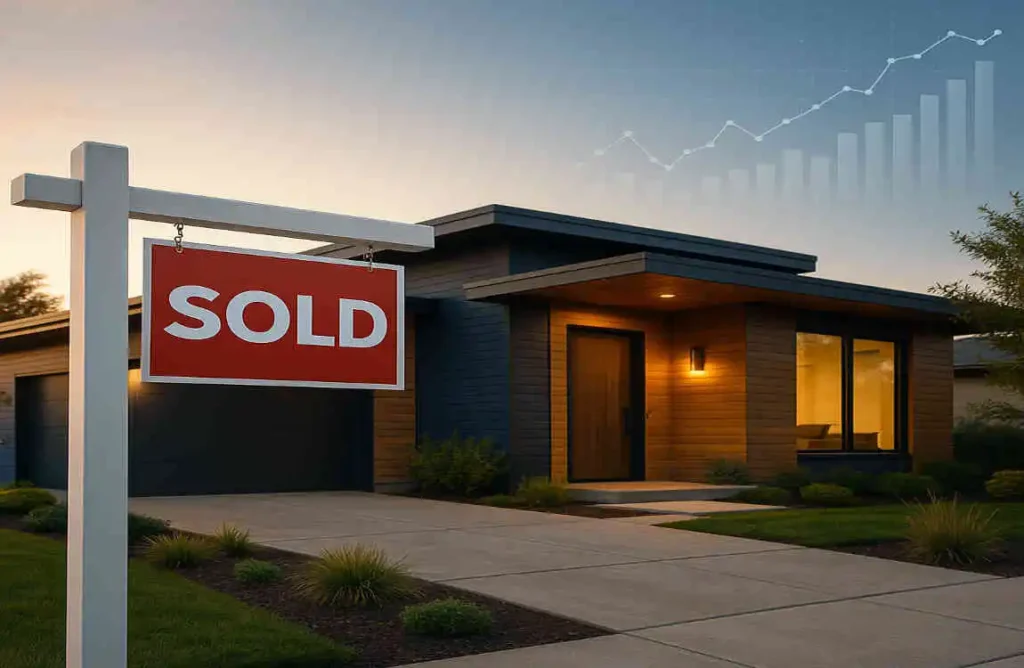Hey there! Have you ever wondered what exactly a real estate home is and why it’s such a big deal in today’s market? Well, you’re in the right place!
What Is a Real Estate Home?

Let’s start with the basics. A real estate home is a piece of land with any permanent structures attached. Think of it as a bundle that includes both the land and the buildings or improvements on that land.
Now, you might be wondering, “How is a real estate home different from other types of property?” Great question! Real estate homes fall under the category of real property, which is distinct from personal property. While individual property includes movable items such as furniture or vehicles, real property refers to land and anything permanently attached to it.
To give you a better idea, here are a few examples of what qualifies as a real estate home:
- A single-family house on a plot of land
- A condominium unit within a larger building
- A townhouse that shares walls with neighboring units
See the pattern? These are all properties that include both land and permanent structures, making them real estate homes.
Categories of Real Estate Homes
Now that we’ve got the basic definition down, let’s take a closer look at the different categories of real estate homes. When most people think of real estate, they’re usually referring to residential properties, which include:
Single-Family Homes
These are standalone houses on their own plots, perfect for families or individuals seeking privacy and space.
Condominiums
Condos are individual units within a larger building or complex, often with shared amenities like pools or gyms. They’re great for those who want a low-maintenance lifestyle.
Townhouses
Townhouses are multi-story homes that share walls with neighboring units, offering a balance between privacy and community living.
But wait, there’s more! Real estate homes also differ from other types of properties, such as:
- Commercial properties (like office buildings or retail spaces)
- Industrial properties (like factories or warehouses)
- Raw land (undeveloped land without any structures)
- Specialty properties (like hotels or churches)
Understanding these categories is essential for anyone involved in the real estate market. Whether you’re buying, selling, or investing, knowing the differences between these property types can help you make informed decisions and maximize your returns.
Why Understanding “What’s a Real Estate Home” Matters Today
So, why is it so essential to grasp the concept of a real estate home in today’s market? Well, let me break it down for you.
Market Dynamics
In 2025, the real estate market is more dynamic than ever. With shifting trends, changing buyer preferences, and evolving regulations, understanding the fundamentals of real estate homes can give you a significant edge. By knowing what defines a real estate home and how it differs from other properties, you can better navigate the market and make more intelligent choices.
Urbanization and Population Growth
As cities continue to grow and populations expand, the demand for real estate homes is skyrocketing. People are flocking to urban areas in search of job opportunities, amenities, and a vibrant lifestyle. This influx of buyers is driving up prices and creating a competitive market, making it even more crucial to understand what makes a real estate home valuable.
Lifestyle Changes
In today’s fast-paced world, people’s lifestyles and priorities are constantly evolving. They’re looking for homes that cater to their needs, whether it’s a smart home with the latest technology or a gated community with top-notch Security. By understanding what constitutes a home in real estate, you can identify properties that align with these changing preferences and capitalize on emerging trends.
Modern Real Estate Homes
Speaking of trends, let’s discuss developments shaping the real estate market in 2025. From smart homes to master-planned communities, these innovative concepts are redefining what it means to own a real estate home.
- Innovative developments: Homes equipped with the latest technology, from automated systems to energy-efficient features.
- Master-planned housing: Carefully designed communities with a mix of residential, commercial, and recreational spaces.
- Gated communities: Secure neighborhoods with controlled access, offering peace of mind and a sense of exclusivity.
These modern real estate homes are attracting buyers and investors alike, and understanding their unique characteristics can help you stay ahead of the curve.
Key Components that Define a Real Estate Home’s Value
Now that we’ve covered the importance of real estate, let’s dive into the factors that determine its value. When it comes to assessing a real estate home, there are several key components to consider:
Location
As the old saying goes, “Location, location, location!” The neighborhood, proximity to amenities, and the overall desirability of the area can significantly impact a home’s value. A prime location can command higher prices and attract more buyers.
Structure Quality
The condition and quality of the home’s structure are also crucial. A well-built, well-maintained property will hold its value better than one that’s in disrepair. Look for signs of quality construction, such as sturdy materials and attention to detail.
Improvements
Any permanent improvements made to the property, such as renovations or additions, can increase its value. Think of things like updated kitchens, finished basements, or added square footage. These improvements can make a real estate home more attractive to buyers and boost its market value.
Legal Ownership Rights
Finally, the legal ownership rights associated with a real estate home are essential. Clear title, proper zoning, and adherence to local regulations all contribute to a property’s value. Make sure to do your due diligence and work with a qualified real estate professional to ensure everything is in order.
These factors are particularly important for buyers, investors, and homeowners in today’s market. By understanding what drives a real estate home’s value, you can make more informed decisions and maximize your returns.
Current Real Estate Market Trends Affecting Homes in 2025

Now that we’ve covered the basics, let’s take a look at some of the current trends shaping the real estate market in 2025. These trends can have a significant impact on real estate homes and the decisions you make as a buyer, seller, or investor.
National and Global Market Trends
On a broader scale, several national and global trends are influencing the real estate market in 2025. These include:
- Low interest rates make borrowing more affordable for buyers
- A shortage of housing inventory is driving up prices and competition
- A shift towards remote work, leading to increased demand for larger homes and suburban properties
- A focus on sustainability and energy efficiency, with buyers seeking eco-friendly homes
These trends are creating a dynamic, sometimes challenging real estate market. Staying informed and adapting to these shifts can help you navigate the market more effectively.
Pakistan’s Real Estate Market Trends
In Pakistan specifically, the real estate market is experiencing its own unique trends in 2025. With rapid urbanization and a growing population, the demand for real estate homes is surging. Here are a few key trends to watch:
- Urban growth: Cities like Lahore and Karachi are expanding, driving up housing demand.
- Investment hotspots: Certain regions, such as Islamabad and Rawalpindi, are becoming popular investment destinations due to their growth potential.
- Infrastructure development: New projects such as highways, metro systems, and commercial centers are boosting the value of nearby real estate.
If you’re considering investing in Pakistan’s real estate market, understanding these trends can help you identify promising opportunities and make strategic decisions.
Emerging Preferences
As buyer preferences continue to evolve, certain features and amenities are becoming increasingly important in real estate homes. In 2025, these emerging preferences include:
- Lifestyle: Buyers are seeking homes that cater to their specific lifestyles, whether it’s a home office for remote work or a spacious backyard for outdoor living.
- Security: With safety concerns on the rise, gated communities and homes with advanced Security systems are in high demand.
- Design: Unique architectural styles, open floor plans, and modern finishes are attracting buyers who want a home that reflects their personal taste.
- Technology integration: Smart home features, from automated lighting to voice-controlled appliances, are becoming must-haves for tech-savvy buyers.
By keeping these emerging preferences in mind, you can better understand what buyers are looking for in a home and position your property to meet their needs.
Real Estate Home vs. Other Property Types
Now that we’ve explored the world of real estate homes, let’s take a moment to compare them to other types of properties. Understanding these differences is crucial for making informed consumer or investor decisions.
Rental Homes
Rental homes are properties that are leased to tenants rather than owned by the occupant. While rental homes can provide a steady stream of income for investors, they differ from real estate homes in several key ways:
- Ownership: With a real estate home, you own the property outright. With a rental home, you own the property but lease it to a tenant.
- Purpose: Real estate homes are typically purchased for personal use or long-term investment, while rental homes are primarily used to generate rental income.
- Maintenance: As a homeowner, you’re responsible for keeping your home in good condition. As a landlord, you’re responsible for keeping your rental property and addressing tenant concerns.
Commercial Spaces
Commercial spaces, such as office buildings or retail stores, are another type of property that differs from residential. Here’s how:
- Use: Residential homes are designed for residential use, while commercial spaces are used for business purposes.
- Zoning: Residential properties are typically zoned for residential use, while commercial spaces are zoned for business activities.
- Leases: Residential properties are usually occupied by the owner or a single tenant, while commercial spaces often have multiple tenants with varying lease terms.
Raw Land
Raw land is undeveloped property without any structures or improvements. While raw land can be a valuable investment, it differs from real estate homes in several ways:
- Development: Real estate homes are already developed with permanent structures, while raw land requires development before it can be used.
- Utilities: Real estate properties typically have access to utilities such as water, electricity, and sewage, whereas raw land may not.
- Permits: Building a home on raw land requires obtaining the necessary licenses and complying with local regulations.
By understanding these differences, you can better assess the pros and cons of each property type and make informed decisions based on your goals and circumstances.
Importance of Real Estate Homes in Wealth Building and Investment
Now that we’ve covered the basics of real estate homes and their place in the market, let’s talk about why they’re such a powerful tool for wealth building and investment.
Stable Investment Assets
Real estate homes have long been considered a stable and reliable investment asset. Unlike stocks or cryptocurrencies, which can be volatile and unpredictable, real estate homes tend to appreciate over time and provide a tangible asset that you can see and touch.
In fact, according to a study by the National Association of Realtors, the median home price in the United States has increased by an average of 3-5% per year over the past few decades. This steady appreciation can help you build wealth over the long term and provide a hedge against inflation.
Benefits of Investing in Real Estate Homes
So, what are some of the specific benefits of investing in real estate homes? Here are a few key advantages:
- Cash flow: If you rent out your real estate home, you can generate a steady stream of rental income to help cover your expenses and build wealth over time.
- Tax benefits: Real estate investors can take advantage of various tax deductions, such as mortgage interest, property taxes, and depreciation, to reduce their tax liability and increase their returns.
- Leverage: With real estate homes, you can use leverage (i.e., borrowing money to invest) to amplify your returns. By making a small down payment and financing the rest of the purchase, you can acquire a valuable asset with relatively little upfront capital.
- Appreciation: As we mentioned earlier, real estate homes tend to appreciate over time, allowing you to build equity and increase your net worth.
Indirect Real Estate Investment
If you’re not ready to dive into direct real estate home ownership, there are also indirect ways to invest in this asset class. Here are a couple of options:
- Real Estate Investment Trusts (REITs): REITs are companies that own, operate, or finance income-generating real estate. By investing in a REIT, you can gain exposure to a diversified portfolio of real estate assets without having to buy and manage properties yourself.
- Pooled Investments: Pooled investments, such as real estate mutual funds or exchange-traded funds (ETFs), allow you to invest in a basket of real estate assets managed by professionals. These investments provide a convenient way to diversify your portfolio and gain exposure to the real estate market.
Whether you choose to invest directly in real estate homes or opt for an indirect approach, the key is to understand the potential benefits and risks and make informed decisions based on your goals and circumstances.
How to Identify a Genuine Real Estate Home
Now that we’ve covered the importance of real estate homes and their role in wealth building and investment, let’s talk about how to identify a genuine real estate home. As a buyer, it’s crucial to know what to look for to make an intelligent, informed decision.
Practical Tips for Buyers
Here are some practical tips to help you recognize a true real estate home:
- Do your research: Before making an offer, research the property’s history, including its ownership, sales records, and any liens or encumbrances. This can help you verify that the property is a legitimate real estate home.
- Inspect the property: Conduct a thorough inspection of the property, both inside and out. Look for signs of permanent improvements, such as plumbing, electrical systems, and structural elements that are attached to the land.
- Review legal documentation: Carefully review all legal documentation related to the property, including the deed, title report, and any covenants or restrictions. This can help you ensure that the property is a genuine real estate home and that you have clear ownership rights.
Checklist for Verification
To help you stay organized and thorough in your search for a real estate home, here’s a handy checklist of what to verify:
- Legal documentation (deed, title report, etc.)
- Property improvements (plumbing, electrical, structural elements)
- Market value (comparable sales, appraisals)
- Zoning and land use regulations
- Property taxes and assessments
By following this checklist and working with a qualified real estate professional, you can increase your chances of finding a genuine home that meets your needs and goals.
The Role of Real Estate Agents
Speaking of real estate professionals, they can play a crucial role in helping you identify and purchase a home. A skilled and experienced agent can:
- Provide market insights and help you understand local trends and conditions
- Identify properties that meet your criteria and budget
- Conduct due diligence and help you verify the property’s status as a real estate home
- Negotiate on your behalf and guide you through the buying process
By working with a trusted real estate agent, you can gain valuable expertise and support as you search for your perfect home.
Why Real Estate Homes Will Continue to Matter in the Future
As we look ahead, it’s clear that real estate will continue to play a vital role in our lives and our economy. Here’s why:
Long-Term Value Trends
Despite short-term fluctuations and market cycles, real estate homes have historically shown strong long-term value appreciation. As populations grow, urbanization continues, and demand for housing remains high, real estate homes are likely to remain a valuable and sought-after asset class.
Sustained Demand
The demand for real estate homes is driven by fundamental human needs for shelter, Security, and a place to call home. As long as these needs persist, there will be a steady demand for real estate, supporting its value and importance in the market.
Technological Innovations
In the coming years, technological innovations are likely to shape the future of real estate homes. From smart home systems to 3D printing and modular construction, these advancements could make real estate homes more efficient, sustainable, and accessible to a broader range of buyers.
Urban Planning
As cities continue to grow and evolve, urban planning will play a key role in shaping the future of residential areas. From mixed-use developments to transit-oriented communities, these planning initiatives can create more livable, vibrant, and sustainable neighborhoods that attract buyers and support real estate home values.
Evolving Concept
Finally, the very concept of a home in real estate is likely to evolve in the coming decade. As lifestyles change, work patterns shift, and social norms adapt, the features and amenities that define a real estate home may look different from what they do today. By staying attuned to these changes and embracing new ideas, real estate homes can continue to meet the needs and desires of future generations.
